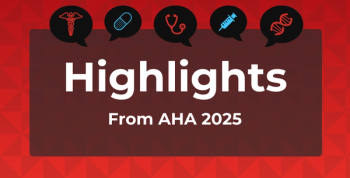
Current Research and Logistical Considerations for Gene Therapy in Hemophilia
A recent review poses gene therapy as a novel treatment option with potential to reduce health care disparities globally.
The treatment paradigm for
The current standard of care for hemophilia, which is characterized by joint, tissue, and sometimes intracranial bleeds, includes clotting factor replacement with factor VIII (FVIII) for hemophilia A and factor IX (FIX) for hemophilia B. Prophylactic treatment with factor replacement or non-factor treatment is typically recommended to reduce bleeding episodes and minimize long-term effects on joints.
In high-income countries (HICs), the recommended agents for standard prophylaxis are typically available despite their a high cost. While more than 60% of the global factor supply is consumed by HICs, more than 75% of patients with hemophilia live in low- and middle-income countries (LMICs) where treatment options may be limited. The cost and limited availability of clotting factor concentrate in LMICs have led to different treatment guidelines, predominantly recommending low-dose prophylaxis and even low-dose treatment for bleeding episodes. The quality of life for patients with hemophilia globally varies due to the differing treatment approaches.
The review, published in the Journal of Blood Medicine, highlights both advances in gene therapy for hemophilia and potential challenges to widespread uptake.
Gene therapy mediated by adeno-associated virus (AAV) vectors is a novel approach to hemophilia A or B treatment, and it has potential to cure hemophilia after a single infusion. Several of these products are on the cusp of regulatory approval, but disparities still persist between HICs and LMICs. Only 7 LMICs out of 137 (4%) have participated in clinical trials, for example.
“Gene therapy offers an exciting opportunity to reduce health inequity in people with hemophilia globally and contribute to improved quality of life, societal and global gains. Adaptation of gene therapy implementation in LMIC versus HIC is essential and requires the use of an implementation science framework.”
One AAV-FIX vector for hemophilia B demonstrated stable FIX expression at low levels for up to 8 years, and 2 vectors have shown stable FIX levels in the mild hemophilia range for up to 1.5 years. Several other vectors targeting FIX levels are being studied in earlier trials. In hemophilia A, just one FVIII gene therapy has been monitored for up to 5 years so far and has shown a continuous decline in FVIII expression. But overall, gene therapy products show potential to reduce hemophilia severity in the long term and reduce bleeding event rates and factor use.
Clinical trials have generally found AAV-mediated gene therapy for FIX and FVIII safe, but more long-term research on safety outcomes is needed. Overall efficacy has also varied between both vector types and between individuals treated with the same vector. This could be due to a variety of causes, but further follow-up data were requested by regulatory agencies ahead of potential approval. Still, current research suggests that a single infusion of gene therapy can lead to either milder hemophilia or normal clotting in eligible patients for at least 5 to 8 years or longer.
A keystep ahead of widespread gene therapy implementation isassessing regulatory policies to ensure they include gene therapy. The FDA and EMA published industry guidance, but regulatory framework may need to be established in many LMICs. Educational programs regarding gene therapy will also be important to more widespread use upon approval, particularly in LMICs.
Financial resources are also a concern, as the proposed price of gene therapy is $1 million to $3 million per dose. While trials are still ongoing and market price is only estimated thus far, 5 cost-effectiveness analyses have already been conducted based on estimated prices and assumed time frames between treatments based on current trial results. Overall, the analyses determined that gene therapy, although significantly more expensive per dose than FIX or FVIII prophylaxis, would potentially reduce lifetime costs of hemophilia treatment. Still, country-specific financial strategies will need to be tailored to ensure patients can gain access to gene therapy.
“Relevant clinical, educational, regulatory, and financial aspects need to be tackled and at times reinvented to cultivate a broadly accessible landscape for this novel treatment technology, dissimilar to any previous one,” the authors concluded. “Particularly, people with hemophilia in countries with limited access to current standard hemophilia treatments have an opportunity for significant improvements in mortality and morbidity.”
Reference
Bolous NS, Bhatt N, Bhakta N, Neufeld EJ, Davidoff AM, Reiss UM. Gene therapy and hemophilia: Where do we go from here? J Blood Med. Published online October 6, 2022. doi:10.2147/JBM.S371438
Newsletter
Stay ahead of policy, cost, and value—subscribe to AJMC for expert insights at the intersection of clinical care and health economics.









































